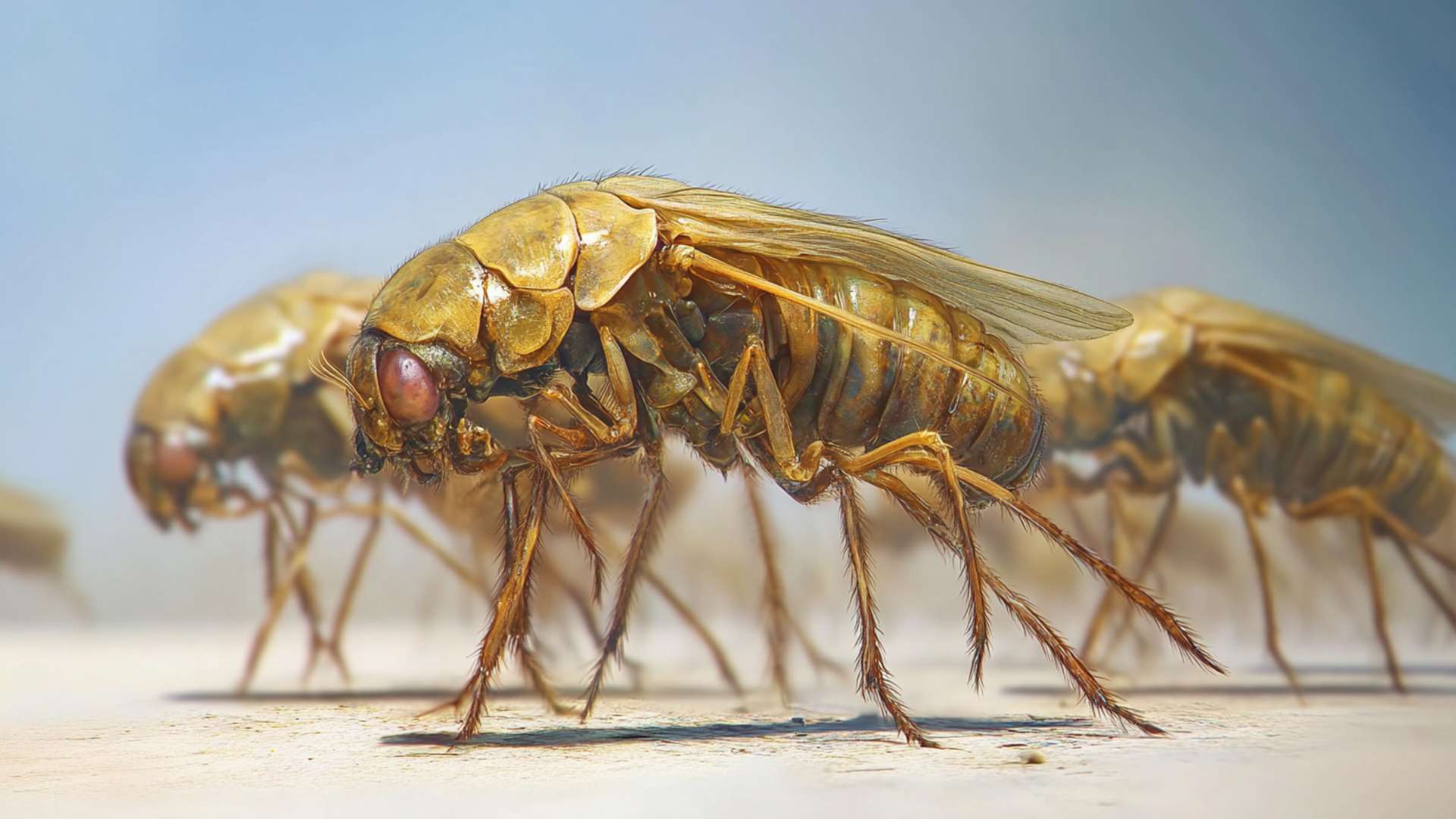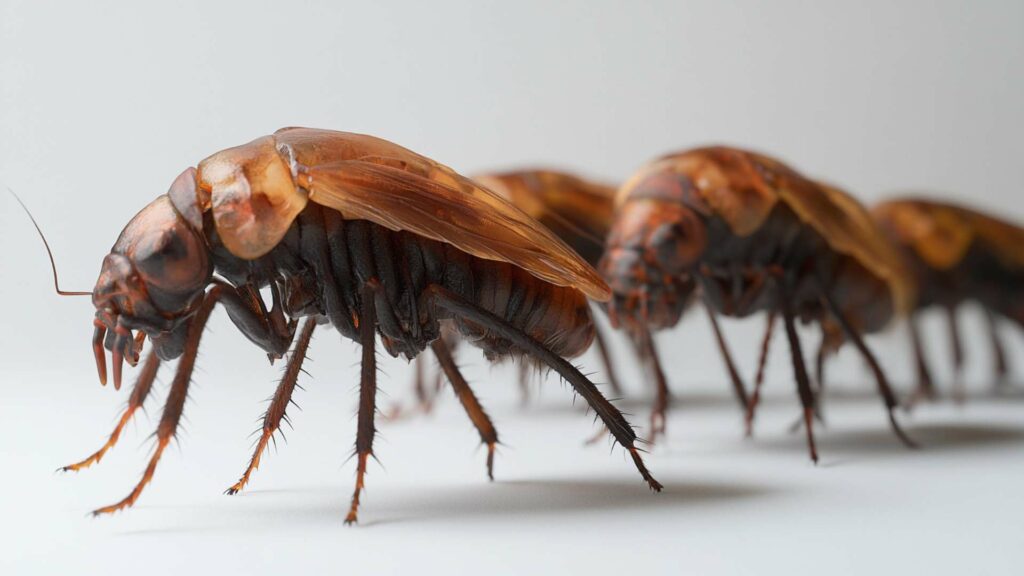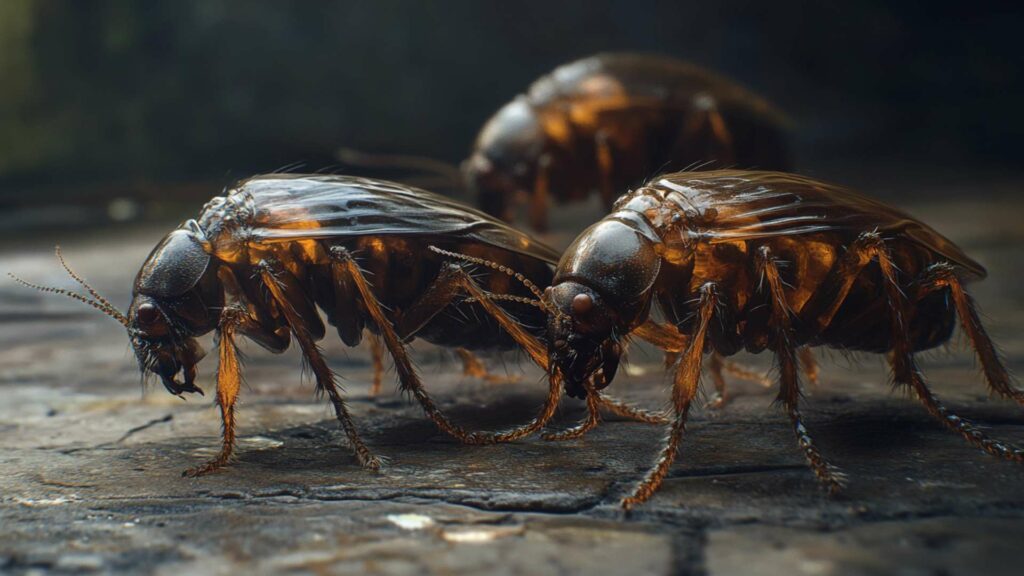Welcome, fellow feline enthusiasts and canine aficionados! Today, we embark on an exploration of the curious world of fleas and their mischievous ability to hop from dogs to our beloved cats. Have you ever wondered if these pesky parasites can indeed make the leap between our furry friends?
Well, wonder no more! In this article, we will unravel the mystery surrounding flea transmission between cats and dogs, shedding light on this important topic that affects the well-being of our four-legged companions.
Before diving into the nitty-gritty details, let’s start with a concise explanation of what exactly we mean by “flea transmission between humans, cats, and dogs.” Fleas are tiny wingless insects that feed on blood. They have a knack for finding warm-blooded hosts to satisfy their insatiable appetite.
Now, when a pet or dog becomes infested with these miniature bloodsuckers—let’s call them dog and cat fleas!—it raises the question: can they hitch a ride onto our feline friends? Can cats get fleas from dogs?
Importance of Understanding Flea Transmission Between Cats and Dogs

Understanding flea transmission between cats and dogs is crucial for several reasons. Firstly, it allows us to provide proper care and preventive measures for both our furry companions.
By understanding how fleas can move from one pet to another, we can take proactive steps in preventing uncomfortable flea infestations that can cause immense distress to our pets. Secondly, comprehending flea transmission helps us address any existing infestations effectively.
If your indoor cat suddenly starts scratching incessantly or develops suspicious red bumps due to flea bites, knowing whether your dog is responsible for introducing those pesky parasites allows for targeted treatment strategies. Additionally, determining whether fleas can jump from dogs to indoor cats, can also help identify potential sources of re-infestation and prevent fleas.
The knowledge of flea transmission between cats and dogs is essential for pet insurance and for those considering adopting both cats and dogs. Understanding the risks and preventive measures associated with this issue enables prospective pet owners to make informed decisions regarding pet insurance and the compatibility of their future feline and canine family members.
Overview of Fleas
Fleas, those tiny but mighty creatures, are ectoparasitic insects that belong to the Siphonaptera order. They are notorious for their incredible agility and annoying bites. With a flattened body shape and strong hind legs specially designed for jumping, fleas possess remarkable survival skills.
They are resilient creatures that can go without food for weeks, yet when given the opportunity, they swiftly latch onto unsuspecting hosts for a blood meal. These pesky parasites measure only about 1-3 millimeters in length, making them adept at hiding within the fur of animals or seeking refuge in cozy pet beds.
Their small size allows them to easily navigate through an animal’s hair follicles or crawl across a human host’s various surfaces. Fleas are equipped with piercing mouthparts known as stylets, which they use to penetrate the skin and feed on their host’s blood.
Life Cycle and Behavior of Fleas
Understanding the life cycle of fleas is crucial in comprehending their impact on furry companions like cats and dogs. These minuscule nuisances undergo complete metamorphosis consisting of four stages: egg, larva, pupa, and adult flea.
Female fleas lay eggs in batches after each blood meal—up to 50 eggs per day! These eggs are usually deposited on the host but can fall off onto bedding or carpets where our pets spend most of their time.
Once hatched from the eggs, flea larvae emerge as tiny worm-like creatures with an appetite for organic matter such as flea dirt (the feces of adult fleas) or other animal debris found in the environment. They avoid sunlight by burrowing into carpets or hiding within cracks in floors until they eventually spin a cocoon during the pupal stage.
Interestingly enough, flea pupae have remarkable adaptability, as they can remain in their protective cocoons for extended periods, waiting for favorable conditions to emerge. They are resistant to many environmental factors and even flea treatment products, making them quite challenging to eliminate.
Once triggered by factors like vibrations or temperature changes, adult fleas will promptly emerge from their cocoons and jump onto nearby hosts—our beloved pets—ready to initiate their blood-sucking endeavors. So now that we have delved into the definition, characteristics, life cycle, and behavior of these pesky critters called fleas let’s explore whether cats can indeed acquire these bothersome hitchhikers from our canine companions.
Can Cats Get Fleas from Dogs?
Fleas are not picky when it comes to choosing their hosts. These pesky parasites have no qualms about infesting both the dogs cats and cats, causing discomfort and potential health issues.
So, can cats get fleas from dogs? The answer is yes!
Fleas can easily jump from one animal to another, making it crucial for pet owners to be aware of this transmission process. When a dog or cat has fleas already, adult fleas lay eggs on its fur.
These tiny eggs might fall off as the dog moves around in the environment. Over time, these eggs hatch into larvae that hide in dark areas such as carpets, bedding, or cracks in floors.
These developing larvae eventually spin cocoons and transform into pupae. Once fully developed adult fleas emerge from the eggs larvae and pupae together, they eagerly search for a new host to feed on.
This is where our feline friends come into play. If a cat comes into contact with an environment infested by flea eggs or pupae shed by an infested with dog fleas, there is a high chance that those fleas will jump onto the cat’s fur as soon as they detect warmth or vibrations.
Once infected fleas are on the cat’s skin, these fleas start feeding within minutes and lay their own eggs within 24 hours. Thus the indoor cat begins an unfortunate cycle of flea infestation that can be challenging to break if left untreated.
Factors that Increase the Risk of Flea Transmission from Dogs to Cats
Several factors can contribute to an increased risk of flea transmission from dogs to cats. Firstly, close physical contact between animals increases the likelihood of flea transfer.
If your cat frequently snuggles or plays with an infested dog, it becomes more susceptible to picking up these unwanted hitchhikers. Additionally, environmental factors also play a role.
Fleas thrive in warm and humid conditions, so areas with more favorable climates can harbor larger populations of fleas. If you live in an area where fleas are prevalent or if your dog spends time outside, the chances of your cat encountering fleas increase significantly.
Another crucial factor is the absence of flea-preventative measures. Regular use of flea preventatives for both dogs and cats is essential to reduce the risk of infestation.
These flea shampoo preventatives can come in various forms, such as topical treatments, oral medications, or collars specifically designed to repel fleas. It’s important to note that even indoor cats who never venture outside can still get fleas if there are other pets in the household who go outdoors or bring fleas inside on their fur.
Flea transmission between animals within the same household is relatively common if preventive measures aren’t taken diligently. By understanding how fleas are transmitted between animals and identifying the factors that increase this risk, pet owners can take proactive steps to protect their furry companions from flea infestations.
Regular use of flea-preventative products, maintaining good hygiene practices for pets and their environment, and minimizing close contact with potentially infested animals can go a long way in keeping these irritating parasites at bay. Remember: preventing flea infestations not only spares your cat from discomfort but also reduces the risk of secondary infections or diseases associated with these persistent pests – ensuring a happy and healthy life for your beloved feline friend.
Signs and Symptoms of Flea Infestation in Dogs

Fleas, those bothersome little pests, can wreak havoc on our beloved furry friends. If your cat or dog is suffering from a flea infestation, there are several signs and symptoms you should be on the lookout for. One telltale sign of flea medicine, is excessive scratching, biting, or chewing.
You may notice your poor pup incessantly scratching behind their ears or gnawing at their hind legs. This behavior is a result of the irritating bites from fleas that cause intense itching.
Another indicator of a flea infestation in dogs is the presence of flea dirt or eggs on their fur. Flea dirt looks like tiny black specks and resembles ground pepper.
To check for it, simply run a fine-toothed comb through your dog’s coat over a white surface – if you spot black dots falling onto the surface, it’s likely flea dirt. Apart from itching and visible signs of fleas, dogs with flea infestations may experience skin irritation or allergic reactions.
Some dogs are more sensitive to flea saliva than others, leading to an allergic response or flea problem known as flea allergy dermatitis (FAD). If you notice redness, swelling, or sores on your dog’s skin, this could indicate FAD caused by fleas.
Signs and Symptoms of Flea Infestation in Cats

Cats are notorious for being meticulous groomers, but excessive grooming or scratching could be an indication that something isn’t quite right. If your feline friend seems fixated on grooming one particular area excessively or develops scabs due to frequent scratching, it’s time to investigate for fleas. Hair loss is another sign that your cat may be dealing with a flea infestation.
Keep an eye out for bald patches on their coat, especially around the base of their tail or near their back legs where fleas tend to congregate. Hair loss can occur as a result of both the fleas themselves and your cat’s excessive grooming to relieve the itching caused by flea bites.
One of the most obvious signs of fleas in cats is the presence of tiny black dots, also known as flea dirt, on their fur. These dots are actually flea feces and are usually found near the base of the tail or along their back.
To confirm if it’s flea dirt, you can place some on a damp white paper towel – if it turns reddish-brown when wet, it indicates that it is indeed flea dirt. It’s essential to act promptly if you suspect your dog or cat has a flea infestation to prevent further discomfort for your pet and potential spread to humans or other animals in your home.
Prevention and Control Measures for Fleas
Regular Grooming Practices to Detect Fleas Early On
Regular grooming is a crucial part of preventing and identifying flea infestations in cats and dogs. By implementing a consistent grooming routine, you can stay on top of any potential issues before they escalate.
Start by brushing your pet’s fur regularly using a comb or brush suited to their specific coat type. This simple act not only helps remove loose hair but also gives you an opportunity to detect and find fleas and remove fleas or flea dirt, those tiny black specks that appear similar to ground pepper.
Pay close attention to areas where fleas tend to hide, such as behind the ears, along the tail, and around the neck. Be gentle but thorough during this process.
Using a fine-toothed comb is another effective method for getting rid of or finding fleas or flea dirt in your pet’s fur. The tightly spaced teeth of the comb can trap these pesky parasites as you run it through your pet’s coat.
Comb through their fur section by section, paying particular attention to areas where fleas are likely to hide, such as the base of the tail or underbelly. Remember that even indoor cats can be at risk for fleas if they come into contact with other animals or have access to spaces frequented by outdoor creatures.
Environmental Management to Prevent Re-infestation
In addition to regular grooming practices, effective environmental management plays a key role in preventing re-infestation of fleas in your home. Start by vacuuming all carpets, rugs, furniture upholstery, and any other areas where your pets frequently rest or spend time indoors.
Flea eggs and larvae can easily hide within fibers, so be thorough during this process. Dispose of the vacuum bag promptly after use or empty it into a sealed plastic bag outside.
Washing bedding items frequently using hot water is another important step to eliminate fleas and their eggs. This includes pet beds, blankets, and any other fabric items your pets come into contact with regularly.
Hot water helps kill the fleas at all life stages, ensuring a thorough removal. If you’re concerned about potential flea infestations on used items, such as thrift store finds for your pets or even your own clothing, washing them before use is highly recommended.
Don’t forget to treat outdoor areas as well since they can serve as a source to get rid of fleas re-infestation. Use appropriate products suited for outdoor spaces to minimize the presence of fleas and deter them from infesting your pets again.
Keep in mind that different species of animals can carry fleas, so even if you only have cats or dogs as pets, other wildlife or feral cats in the vicinity might introduce these pesky parasites into your environment. By incorporating regular grooming practices and implementing effective environmental management techniques, you can significantly reduce the risk of flea infestations in your home and keep both your pets and yourself free from these irritating pests.
Treatment Options for Flea Infestations
When it comes to treating flea infestations in your furry companions, topical treatments can often be highly effective. These treatments usually come in the form of spot-on solutions that contain insecticides specifically formulated to kill fleas and prevent their recurrence.
Spot-on treatments are applied directly onto the skin, typically at the base of the neck or between the shoulder blades, where your pet cannot lick it off. One popular brand of spot-on treatment is Advantage, which is available for both cats and dogs.
This product contains imidacloprid, an insecticide that targets fleas by affecting their nervous system. Once applied to cat fleas only, it spreads across your pet’s body through their natural oils, providing protection against fleas throughout their entire coat.
By using spot-on treatments containing insecticides like imidacloprid, you can effectively eliminate adult fleas on your pets and disrupt the female flea’s life cycle by preventing eggs from hatching or larvae from developing into adults. However, it is crucial to follow the instructions carefully and use products specifically designed for either dogs or cats since certain active ingredients can be toxic to one species but safe for another.
Conclusion
While fleas may be pesky parasites that can cause discomfort and irritation to our beloved pets, there are effective treatment options available. Topical treatments such as spot-on solutions containing insecticides have proven to be successful in controlling flea infestations in both cats and dogs.
By regularly applying these flea products and treatments as directed by a veterinarian, you can ensure that your furry friends remain protected from these irritating creatures. Remember that prevention is key in managing flea infestations.
Alongside regular use of topical treatments, maintaining good hygiene practices including frequent grooming with a flea comb and washing bedding frequently can further help in preventing flea re-infestation. Additionally, keeping your home environment clean by vacuuming regularly and treating outdoor areas can significantly reduce the risk of fleas becoming a recurring problem.
With proper care and attention, you can keep your cats and dogs free from fleas, ensuring their comfort and well-being. So don’t let these tiny insects ruin your pet’s happiness – take action today to eliminate fleas and provide them with the pest-free environment that they deserve!
Get Rid of Fleas with D-Termination: Las Vegas’ Top Pest Control Service!

If you’re grappling with flea issues on your Las Vegas property, D-Termination is your trusted solution. Our skilled team excels at eradicating flea infestations and restoring comfort and serenity to your space. Bid farewell to fleas by selecting D-Termination for proficient pest control today!
You can reach out to us at 702-919-6310 or visit dtermination.com to schedule your flea control service and take back your space from these bothersome pests.
Frequently Asked Questions:
Yes, fleas from dogs can affect cats if they come into contact.
To get rid of dog fleas on a cat, use cat-specific flea treatments and consult your veterinarian.
Indoor cats can get fleas from other pets, humans, or by hitchhiking on clothing.
Cat fleas and dog fleas are different species but can both infest cats. Cat fleas are more common on cats, and they have some subtle distinctions from dog fleas.







